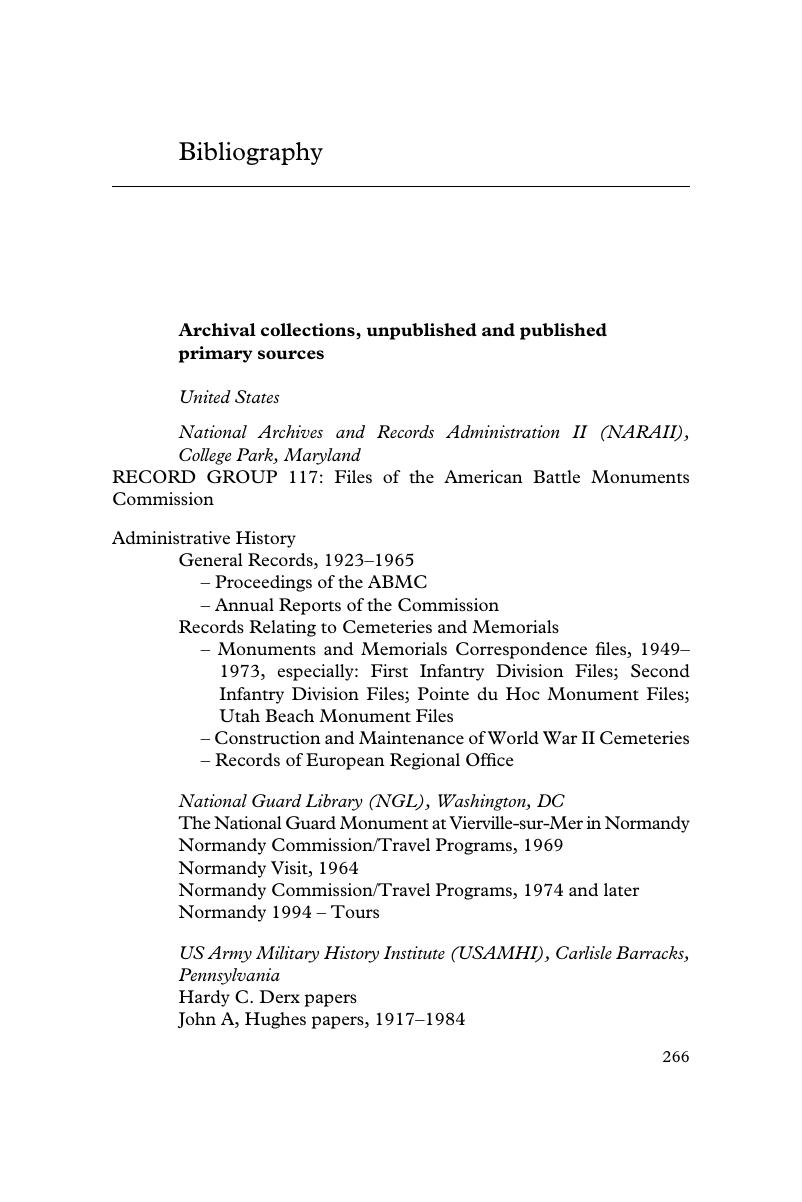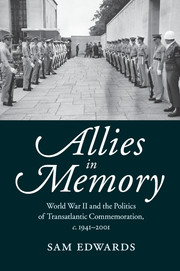Book contents
Bibliography
Published online by Cambridge University Press: 05 March 2015
Summary

- Type
- Chapter
- Information
- Allies in MemoryWorld War II and the Politics ofTransatlantic Commemoration, c.1941–2001, pp. 266 - 291Publisher: Cambridge University PressPrint publication year: 2015



